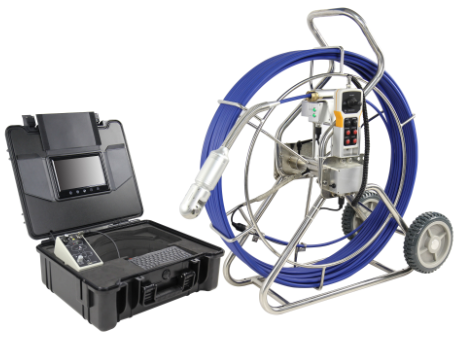Resolución de problemas y reparación de videoscopios industriales
Introducción: Industrial videoscopes are valuable tools used in various industries for visual inspection of hard-to-reach areas. Sin embargo, like any electronic device, videoscopes may encounter issues over time. This article aims to provide guidance on troubleshooting common problems with industrial videoscopes and steps to repair them effectively.
- Problem Identification: When an industrial videoscope malfunctions, the first step is to identify the specific problem. This can involve issues such as a blank screen, distorted image, flickering display, or intermittent power. Thoroughly examine the device and note down any visible symptoms or error messages.
- Battery and Power Supply: If the videoscope fails to power on or quickly loses power, check the battery or power supply. Ensure the battery is fully charged or replace it if necessary. Verify the connection between the power supply and the device, ensuring it is secure and functioning correctly.
- Display and Image Quality: For problems related to the display or image quality, check the connection cables between the videoscope and the display monitor. Ensure they are securely plugged in and not damaged. Adjust the brightness, contrast, and focus settings on both the videoscope and the monitor to enhance image quality.
- Lens and Camera Issues: If the videoscope produces blurry or distorted images, the lens or camera may be the cause. Clean the lens and camera components carefully using a lint-free cloth and mild cleaning solution. Inspect for any physical damage or obstructions. If necessary, contact the manufacturer for lens or camera replacement.
- Software and Firmware Updates: Videoscopes often have software or firmware that can be updated to resolve bugs or improve performance. Check the manufacturer’s website for any available updates. Follow the instructions provided by the manufacturer to install the updates correctly.
- Professional Repair Services: In cases where the issue persists or involves complex internal components, it is advisable to seek professional repair services. Contact the manufacturer or an authorized service center to request assistance. Provide a detailed description of the problem and any troubleshooting steps already taken.
Conclusión: Troubleshooting and repairing industrial videoscopes require a systematic approach to identify and address specific issues. By following the steps outlined above, many common problems can be resolved effectively. Sin embargo, if the problem persists or involves intricate internal components, it is recommended to seek professional repair services. Regular maintenance, proper handling, and firmware updates can help prevent issues and ensure the longevity of industrial videoscopes.


